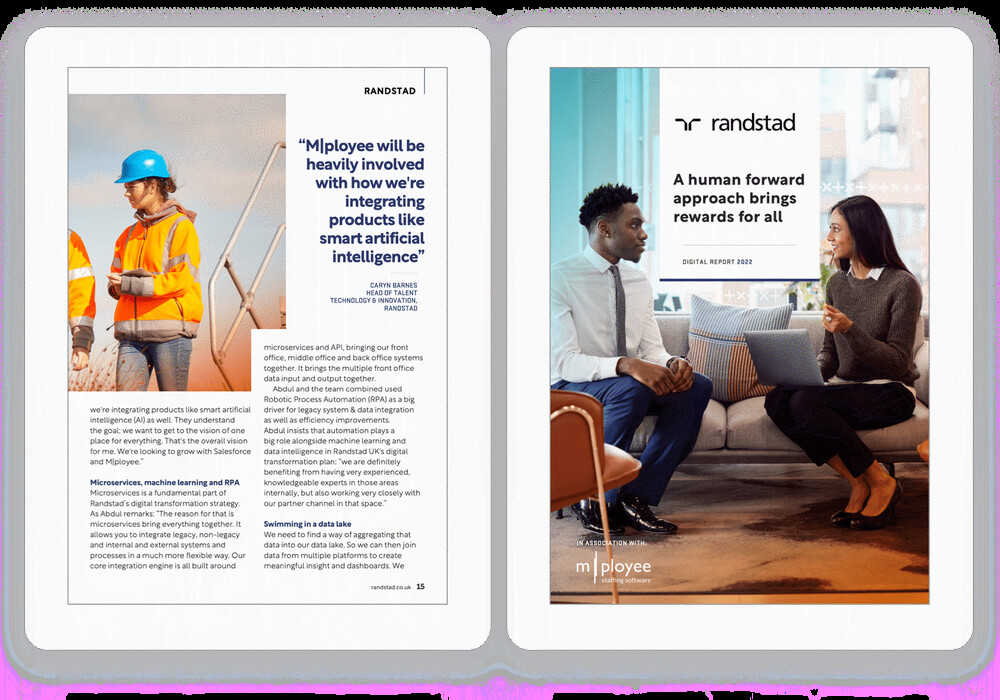Over the last few months, I’ve focused my blogs on a few key topics, namely onboarding, retention and reskilling of the contingent workforce. But I want to drill down into the technology that underpins achieving this, or at least the software that recruiters and candidates are increasingly seeking.

In the hiring world, it’s no longer the case that firms specialise in either permanent or temporary recruitment. There’s a wealth of cross-over, particularly as the reliance on the contingent workforce grows and more individuals begin actively choosing to move between permanent and contingent roles.
Naturally, as recruitment firms try to balance onboarding temp and perm, many are looking for off-the-shelf software to support them. But, does such a thing really exist? Or at least, is there a solution that will service the needs of staffing firms for both recruitment models?
Finding the right solution
In order to explore this topic further, I interviewed Mark Allen, Director of Operations at PMR and VERTO HR, as part of the Staffing RecOps podcast. While we had a very interesting conversation about the many challenges facing the brands he works for, I found it particularly interesting that Mark mentioned that they’d had to split out their CRM for temporary and permanent solutions.
The ability to provide a platform for temporary workers to essentially onboard themselves is a talking point that’s really picked up in interest in recent times. A lot of conversations I’m having with recruitment leaders and indeed a common message from the podcast interviewees I’ve spoken to so far, have centred on the need to put more power in the hands of contingent workers during the onboarding process.
Everything from submitting Right to Work (RTW) verifications, identity documents and other compliance needs, to adding contact and bank details for payments all in one platform is clearly growing in popularity from the worker community. This is also translating into other parts of the contingent journey, including timesheet submission and shift calendar access, with individuals wanting to manage this themselves with as little hassle as possible.
And, as Mark highlighted, a lot of recruiters are ‘360’ – they work across permanent and contingent. And of course, an individual can move from perm to temp and vice versa at any point. Having a joined-up approach to onboarding workers across both elements of the recruitment mix is only going to become more important. But it is seemingly not a possibility for far too many recruitment firms.
Meeting the needs of the masses
It is important to stress the impact that a disjointed approach can have on the experience of workers and, subsequently, their retention. The candidates themselves may be coming in with a willingness to consider both temporary or permanent positions. Requiring them to duplicate their own onboarding – particularly given the move towards these individuals essentially onboarding themselves – is only going to have a negative experience on the candidate experience.
Similarly, providing inconsistencies in onboarding those in a permanent versus temporary position could leave a sour taste, with some perhaps inadvertently feeling that more effort is being placed on one group over another.
So, should there be off-the-shelf software that onboards both permanent and temporary workers?
The honest answer is yes and no. Yes, a joined-up approach is needed and there should be a connection between perm and temp experiences and the software they engage with. But no, this solution shouldn’t be off-the-shelf, at least not in the sense that one-size should fit all.
I’ve spoken to a number of recruitment leaders for the Staffing RecOps podcast and while there are similarities across them all, there’s equally as many differences. The onboarding strategy that would work for Mark’s business, wouldn’t work for Kirsty’s, for example.
And what would work for one today, probably won’t work in the same way five years from now. I think we’re moving away from a focus on off-the-shelf solutions in the recruitment market, into full customisation. Interestingly, though, this is seemingly being driven more by the demands and needs of workers than the want of recruiters.
That’s not to say there’s no desire from staffing companies for a tailored (and simple) approach to onboarding and managing contingent workers. Rather that is the drivers and motivators of the workers themselves that is having the greatest impact on influencing change.
If you’re interested in taking part in the podcast, contact hello@staffingrecops.com.



